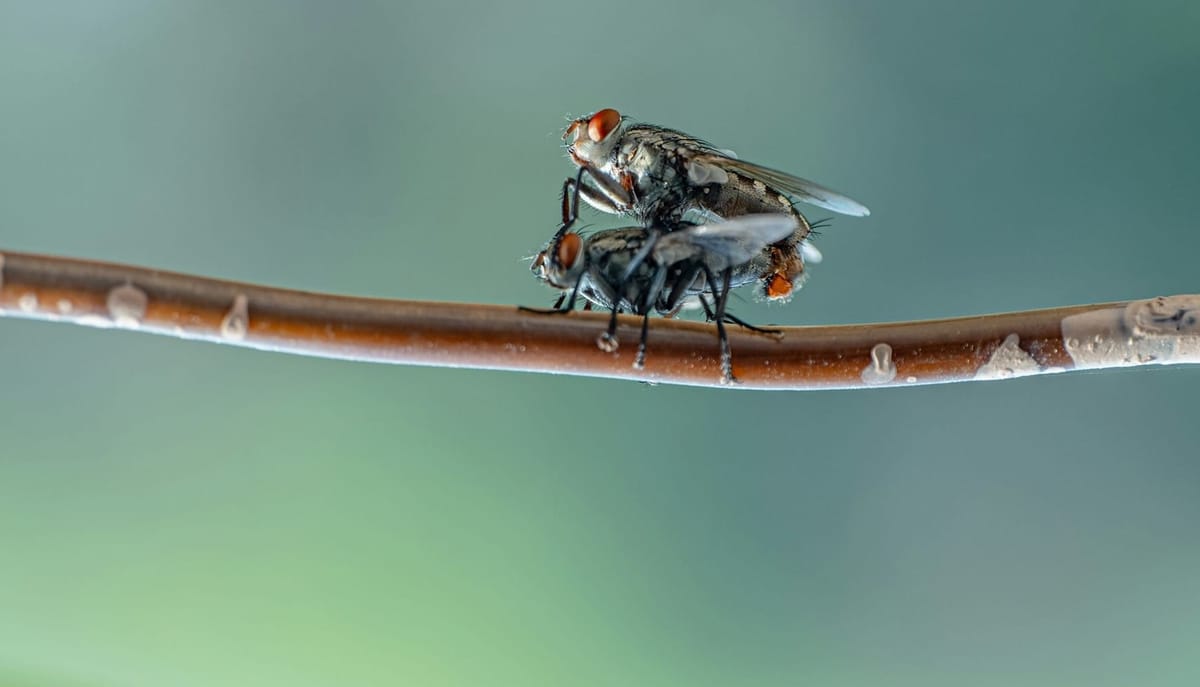The evolution of love: How courtship circuits in the brain turn into real life romance

Fruit flies have developed fascinating ways to ensure they find the right mating partner. Their courtship rituals aren’t just about what they see. They rely heavily on smells, sounds, and even specific behaviors. Does that sound familiar?
The way signals are processed in the brain is crucial for effective mating. Different groups of neurons in the brain receive and respond to various external signals. This arrangement allows for more precise control over how to behave during courtship.
In this study, researchers looked at the specific fruit fly Drosophila yakuba. This fly is special regarding how their brain integrates pheromone signals.
While other species also respond to pheromones, this fly has developed a unique way of tuning their sensory neurons to prioritize certain pheromones for courtship. Thereby the fly enhances its chances of finding a mate of their own species.
Smell and the brain: The role of pheromones
One of the primary ways these flies identify potential mates is through pheromones. Pheromones are natural chemicals that living things (like animals and humans) release to send signals to others of their species.
These signals can affect behavior, like marking territory warning of danger, or attracting a mate. It's like a hidden communication system using scents, even though we may not consciously notice them.
The males have a preference for courting females of their own species. However, the pheromones the female uses can sometimes be vague, meaning they don’t always clearly signal the sex or species of the other fly.
Smart fruit fly guys
What’s particularly interesting is that the fly males have solved this problem by not depending solely on the usual pheromone-detecting neurons.
The research showed that if fly males had mutations in the main receptor for an important pheromone, it didn’t affect their ability to court the females. This suggests that they have alternative ways to detect a relevant mate.
Their brains have evolved to integrate other types of sensory information to improve their chances of recognizing and courting the right mate.
The Brain process Behind Courtship
So, the courtship process in this fruit fly is more complex than it might seem.
It involves various parts of the brain that work together, particularly certain groups of neurons that help process different sensory information from the outside. Thereby creating a complex web of input that drives mating behaviors.
What’s remarkable is that the male fruit fly neurons can change how they respond to pheromones over time. Some neurons in this fly have developed a new special sensitivity to a pheromone called 7-tricosene. These fruit flies did not use to have that.
This means that when the neurons are exposed to 7-tricosene from the female, the male fly's brain sends stronger signals to the courtship centers, promoting a mating response. New sensory inputs increase the drive. The system has evolved!
The Bigger Picture: Evolution and Brain
So, instead of waiting for evolution (which notoriously takes a lot of time) to change their genetic makeup, these fruit flies have found ways to tinker with the existing structures in their brains.
With the introduction of new sensory input, for instance, new pheromones, the fly instead modifies how certain neurons work together. They adapt their mating strategies to better fit their environment without changing their neuroanatomy.
This is a clever evolutionary strategy, allowing them to enhance their courtship without completely reinventing their brains.
In summary, the courtship behaviors of fruit flies are a stunning example of how sensory information is processed in the brain to produce complex behaviors.
By using a combination of pheromones and other sensory inputs, these flies have developed sophisticated mating strategies that allow them to navigate and change fast in response to the challenges of their mating environments.
The organization and possibility of re-organization of their neural circuits show how evolution can lead to diverse and flexible behaviors while still utilizing the fundamental building blocks of the nervous systems.
About the scientific paper:
First author: Rory T. Coleman, USA
Published in: Nature. October 2024.
Link to paper: https://www.nature.com/articles/s41586-024-08028-1




Comments ()